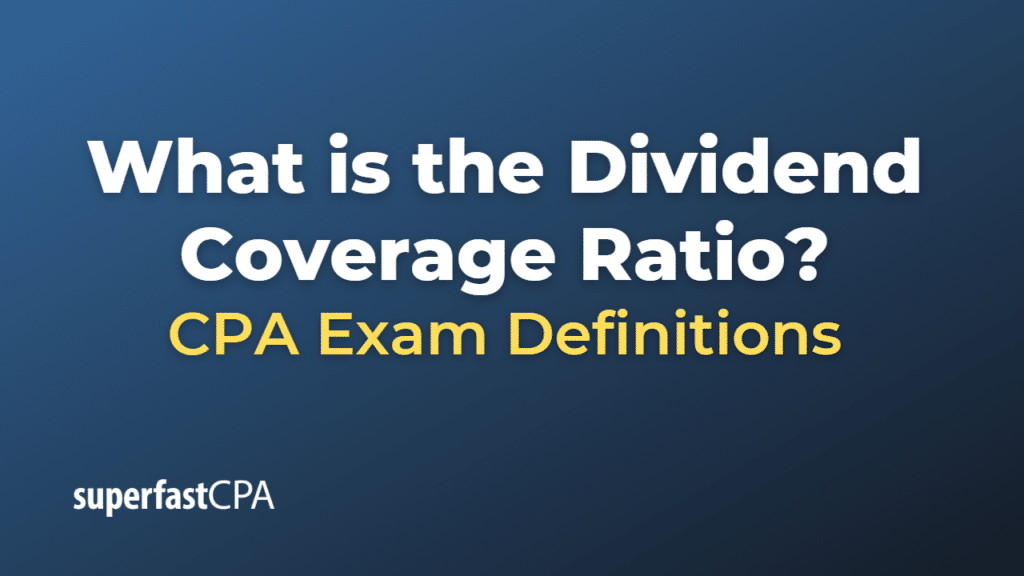Dividend Coverage Ratio
The Dividend Coverage Ratio, also known as dividend cover, is a financial metric that measures a company’s ability to pay its expected dividends to shareholders. It is calculated by dividing the company’s net income by the total dividends paid to shareholders.
Here’s the formula:
\(\text{Dividend Coverage Ratio} = \frac{\text{Net Income}}{\text{Dividends Paid}} \)
The resulting number tells you how many times a company could cover its dividend payouts with its net income.
A higher ratio means that a company has a larger buffer to maintain dividend payments if earnings drop. On the other hand, a lower ratio means the company has less of a safety net and may have to cut dividends if earnings decrease.
A Dividend Coverage Ratio of less than 1 indicates that a company’s dividends exceed its net income, which is unsustainable in the long run. Such a company might be financing its dividend payments from reserves or debt, which could signal financial distress.
Investors interested in dividend-paying stocks often look at the Dividend Coverage Ratio as one of the key indicators of dividend safety and sustainability. However, like all financial ratios, it should be used in conjunction with other measures and not in isolation when making investment decisions.
Example of the Dividend Coverage Ratio
Let’s consider a hypothetical company called “HealthyCo.”
For the fiscal year, HealthyCo reports a net income of $1 million. In the same year, it pays out $200,000 in dividends to its shareholders.
To calculate the Dividend Coverage Ratio, we would divide the net income by the dividends paid:
\(\text{Dividend Coverage Ratio} = \frac{\text{Net Income}}{\text{Dividends Paid}} \)
\(= \frac{\$1,000,000}{\$200,000}= 5 \)
In this case, HealthyCo’s Dividend Coverage Ratio is 5, which means the company’s net income can cover its dividend payments five times over. This suggests that HealthyCo has a strong ability to sustain its current level of dividend payouts.
But what if HealthyCo’s net income was only $150,000? Then, the calculation would be:
\(\text{Dividend Coverage Ratio} = \frac{\text{Net Income}}{\text{Dividends Paid}} \)
\(= \frac{\$150,000}{\$200,000}= 0.75 \)
In this case, the Dividend Coverage Ratio is less than 1, suggesting that HealthyCo’s net income is insufficient to cover its dividend payments. The company might be using its cash reserves or taking on debt to fund the dividend, which could be a red flag for investors. This situation may prompt the company to reconsider its dividend policy, possibly reducing or eliminating the dividend until its financial performance improves.













